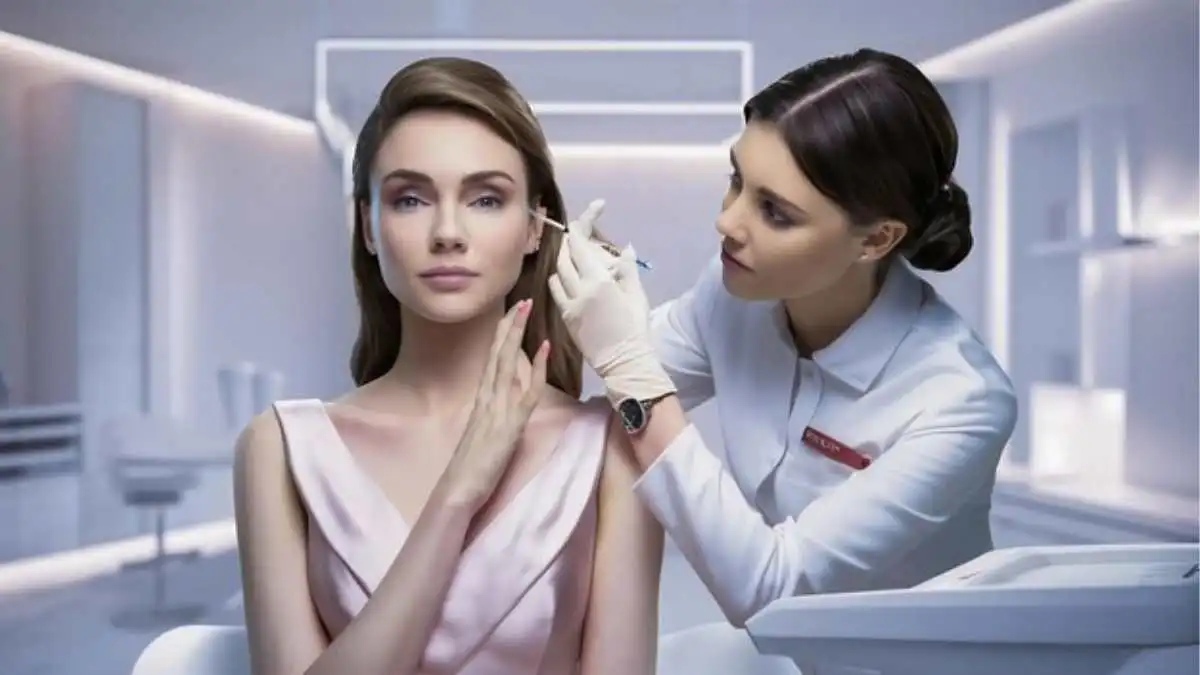HEALTH AND FITNESS
How Dermatologists Help With Anti-Aging and Skin Rejuvenation

How Dermatologists Help With Anti-Aging and Skin Rejuvenation
As we age, our skin undergoes various changes, such as wrinkles, fine lines, age spots, and loss of elasticity. These changes can make us feel less confident, but modern dermatology offers a range of solutions to help maintain youthful, radiant skin. Regular visits to a Dermatologist Arlington Heights can be essential in achieving anti-aging and skin rejuvenation goals. Dermatologists understand the skin’s aging process and can provide treatments and advice that restore its youthful appearance.
Understanding the Skin Aging Process
The aging process affects the skin in multiple ways. Collagen and elastin, two key proteins responsible for skin firmness and elasticity, decrease with age. As a result, the skin becomes more prone to sagging and forming fine lines and wrinkles. Sun exposure over the years can also lead to sun damage, contributing to age spots, uneven skin tone, and dryness. These signs of aging can be distressing, but dermatologists offer various treatments that can reverse or significantly minimize their appearance.
Tailored Skin Care Advice
One of the main ways dermatologists assist with anti-aging and skin rejuvenation is by offering personalized skincare advice. Everyone’s skin is different, and a one-size-fits-all approach rarely works for aging skin. During a consultation, a Dermatologist in Arlington Heights will evaluate your skin’s condition, lifestyle, and concerns to develop a customized anti-aging plan. This could include recommendations on daily skincare routines, which products to use (like retinoids or vitamin C), and lifestyle adjustments (such as sun protection and hydration).
Anti-Aging Treatments and Procedures
For more immediate and noticeable results, dermatologists offer various non-invasive treatments to reduce the visible signs of aging. These procedures are often quicker and require little to no downtime, making them ideal for individuals looking for rejuvenation without undergoing surgery. Here are some common anti-aging treatments dermatologists offer:
Botox and Dermal Fillers
Botox and dermal fillers are among the most popular anti-aging treatments. It temporarily paralyzes muscles to reduce the appearance of fine lines and wrinkles, particularly around the forehead, eyes, and mouth. On the other hand, dermal fillers add volume to areas where the skin has lost fullness, such as the cheeks or under the eyes.
Chemical Peels
Chemical peels involve applying a chemical solution to the skin, which exfoliates the outer layer and promotes the growth of new, youthful skin. This procedure can help treat sun damage, fine lines, wrinkles, and uneven skin tone. There are different types of chemical peels, ranging from mild to profound, and a dermatologist will determine the best option based on your skin type and goals.
Microneedling
Microneedling is another treatment gaining popularity for skin rejuvenation. It involves using tiny needles to create controlled micro-injuries on the skin’s surface, which stimulates collagen production and helps improve skin texture, reduce fine lines, and even out skin tone. Microneedling is effective for treating acne scars, stretch marks, and other signs of aging, and the results are typically gradual, with noticeable improvement over time.
Laser Treatments
Laser treatments are highly effective for rejuvenating the skin and treating specific aging concerns. Fractional CO2 lasers, for example, can reduce the appearance of wrinkles, age spots, and sun damage by targeting the deeper layers of skin and stimulating collagen production. Laser treatments are also available for pigmentation issues, such as age spots or melasma, that can help even out the skin tone.
Sun Protection and Prevention
Dermatologists emphasize proper sun protection as one of the most crucial aspects of anti-aging. Sun exposure accelerates skin aging by breaking down collagen and causing sunspots, wrinkles, and skin damage. Dermatologists strongly recommend using broad-spectrum sunscreen with at least SPF 30 daily, even on cloudy days or indoors, to protect the skin from harmful UV rays.
Lifestyle Changes for Healthy Skin
While dermatological treatments can work wonders, lifestyle changes are also essential for maintaining healthy, youthful skin. Dermatologists often recommend diet, exercise, and hydration changes to help rejuvenate the skin. Eating a balanced diet rich in antioxidants (like fruits and vegetables) and staying hydrated helps to keep skin plump and glowing. Avoiding smoking, reducing alcohol intake, and getting regular sleep support healthy skin.
Consulting with a Dermatologist
For anyone looking to combat signs of aging and rejuvenate their skin, consulting with a Dermatologist in Arlington Heights is a wise choice. Dermatologists provide expert advice on how to keep the skin youthful, and their non-invasive treatments can deliver noticeable, long-lasting results. By offering tailored skincare plans, anti-aging treatments, and lifestyle recommendations, dermatologists help people of all ages maintain beautiful, youthful skin. Regular visits ensure your skin receives the care it needs to look its best and age gracefully.
Whether you’re concerned about wrinkles, sunspots, or sagging skin, a dermatologist is your best resource for understanding the causes of aging skin and providing solutions that work for you. Make an appointment today to learn how dermatological care can help you achieve youthful, glowing skin.
-

 BIOGRAPHY6 months ago
BIOGRAPHY6 months agoBehind the Scenes with Sandra Orlow: An Exclusive Interview
-

 HOME1 year ago
HOME1 year agoDiscovering Insights: A Deep Dive into the //vital-mag.net blog
-

 HOME1 year ago
HOME1 year agoSifangds in Action: Real-Life Applications and Success Stories
-

 BIOGRAPHY1 year ago
BIOGRAPHY1 year agoThe Woman Behind the Comedian: Meet Andrew Santino Wife




























